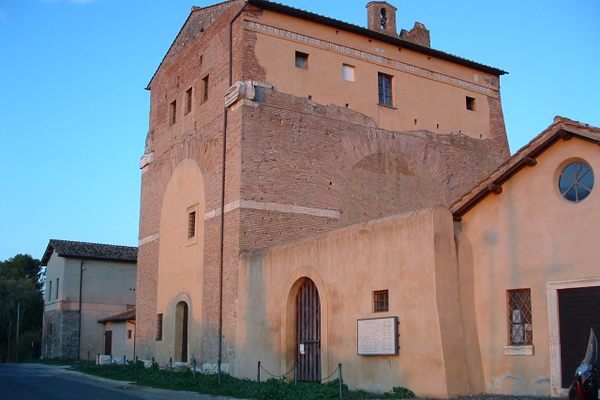About
In the mid-second century, the coastal town of Oea (now modern-day Tripoli in Libya) began an architectural shift to better reflect its recently acquired status as a Roman colonia. Monumental Roman-style structures were erected in what is now Tripoli’s old town, bringing a distinctly Roman identity to a settlement founded by the Phoenicians and ruled by Greeks and Carthaginians before the Romans arrived.
Unlike the other two ancient cities of Roman Tripolis—Sabratha and Leptis Magna—Oea has been continuously inhabited. Over the centuries, many of its older buildings have been quarried for material or built over and destroyed, leaving scant traces of the city’s Roman past. The most notable exception is the Arch of Marcus Aurelius, a fascinating triumphal arch that would have been central to the town’s Roman identity.
Thanks to a four-line inscription on the arch, we know it was built in honor of Emperor Marcus Aurelius and Lucius Verus. Lucius Verus was the adoptive brother of Marcus Aurelius, and the triumphal arch was erected in large part to commemorate his recent victories over the Parthians.
Completed around 165 and built almost entirely from marble, the arch has a rectangular footprint measuring about 41 feet by 32 feet. It is a quadrifrons (or tetrapylon) arch, being of cubic shape with a gate on each of the four sides.
The arch was placed in a prominent position near the harbor and at the crossroads leading out to Odea's neighboring towns. As such, new arrivals, especially important visitors, would have passed through the arch when arriving in Oea.
At the time of its construction, the Arch of Marcus Aurelius would have been one of the most elaborately decorated arches in North Africa. It has been heavily eroded over the years, with some parts so damaged that the original features have been lost. But many of the most interesting features can still be identified, especially on the northwest face.
Among the decorative acanthus leaves, vines, and grapes etched into the pillars are various figures, including representations of captured barbarians. Among the prisoners are a male with hands bound, a seated woman, and a young boy who seems to be crying. The most important figures, however, are those of the city’s patron deities, Apollo and Minerva. Apollo is represented in a chariot drawn by two griffins, while Minerva, bearing helmet and shield, stands in a chariot pulled by a pair of sphinxes.
Four notably empty niches are also embedded within the arch. These likely once held statues of both Emperor Marcus Aurelius and Lucius Verus. Statues have been found in excavations around the fringes of the arch, one of which has been identified as Lucius Verus. In terms of size, it would have fit quite nicely inside one of the now vacant niches.
Related Tags
Know Before You Go
The Arch of Marcus Aurelius is located along Al Hara Alkabir Street in the Old Town of Tripoli. Tripoli is the capital and largest city of Libya, and is located in the northwest of the country. The arch can be seen at any time of day. Entrance is free.
Community Contributors
Added By
Published
December 26, 2019




























